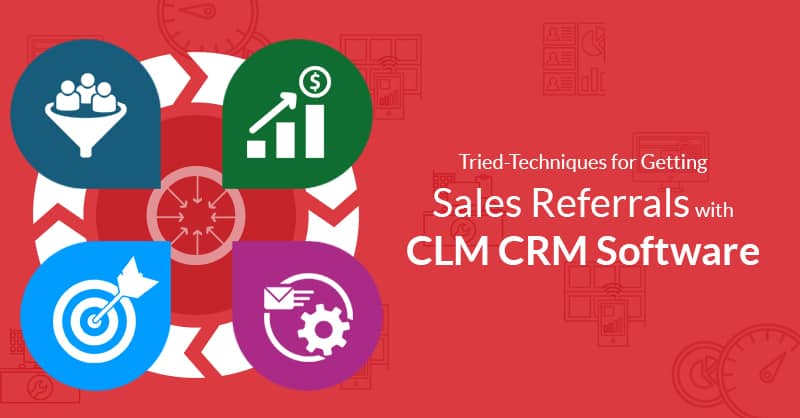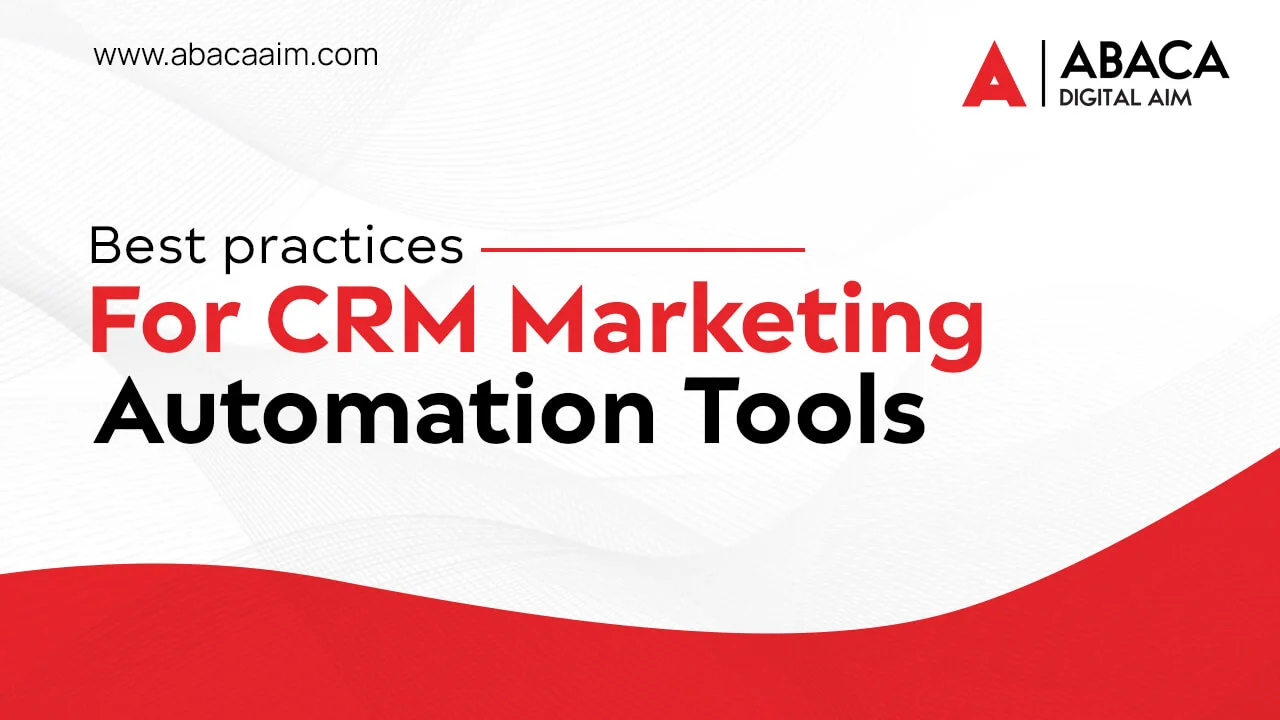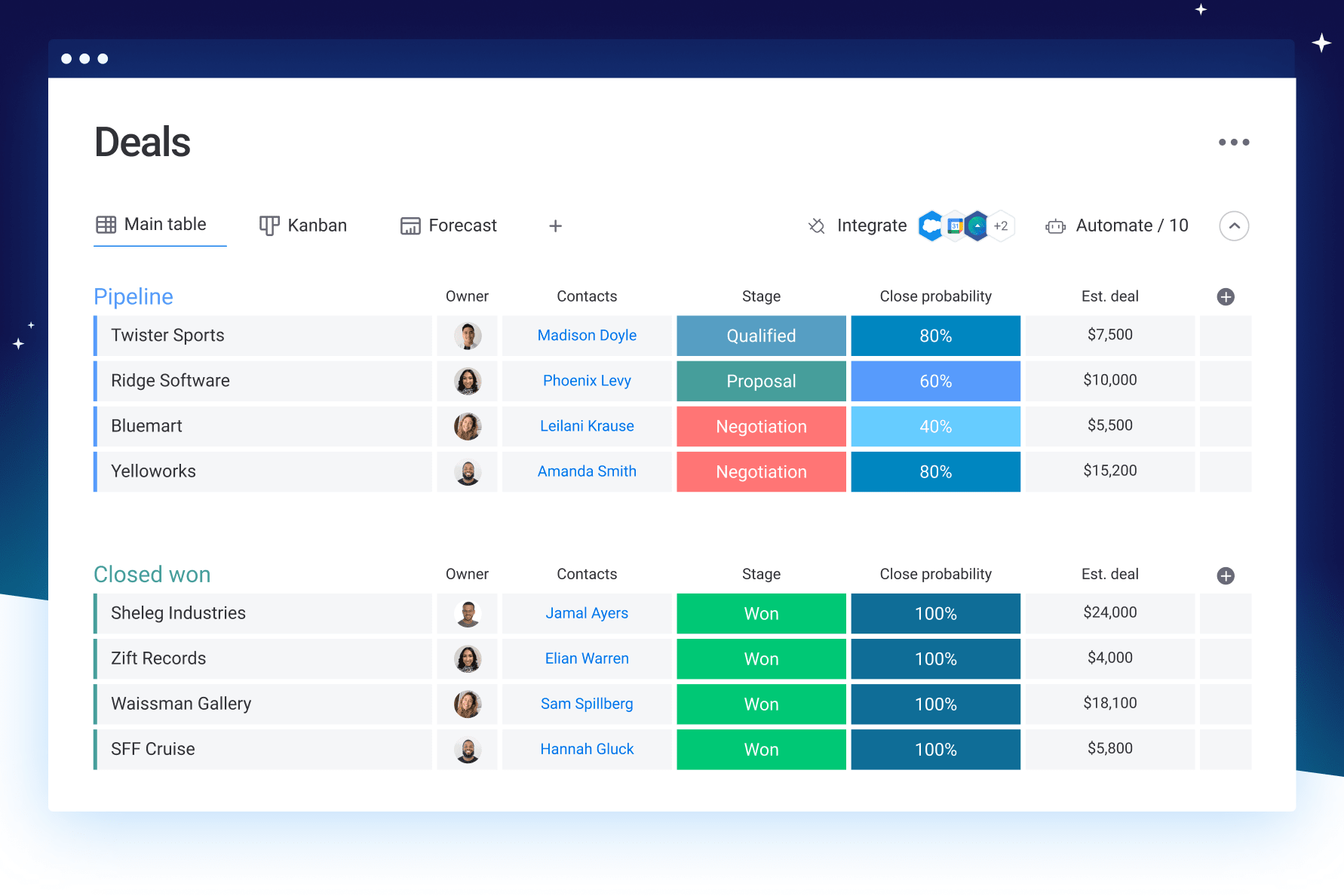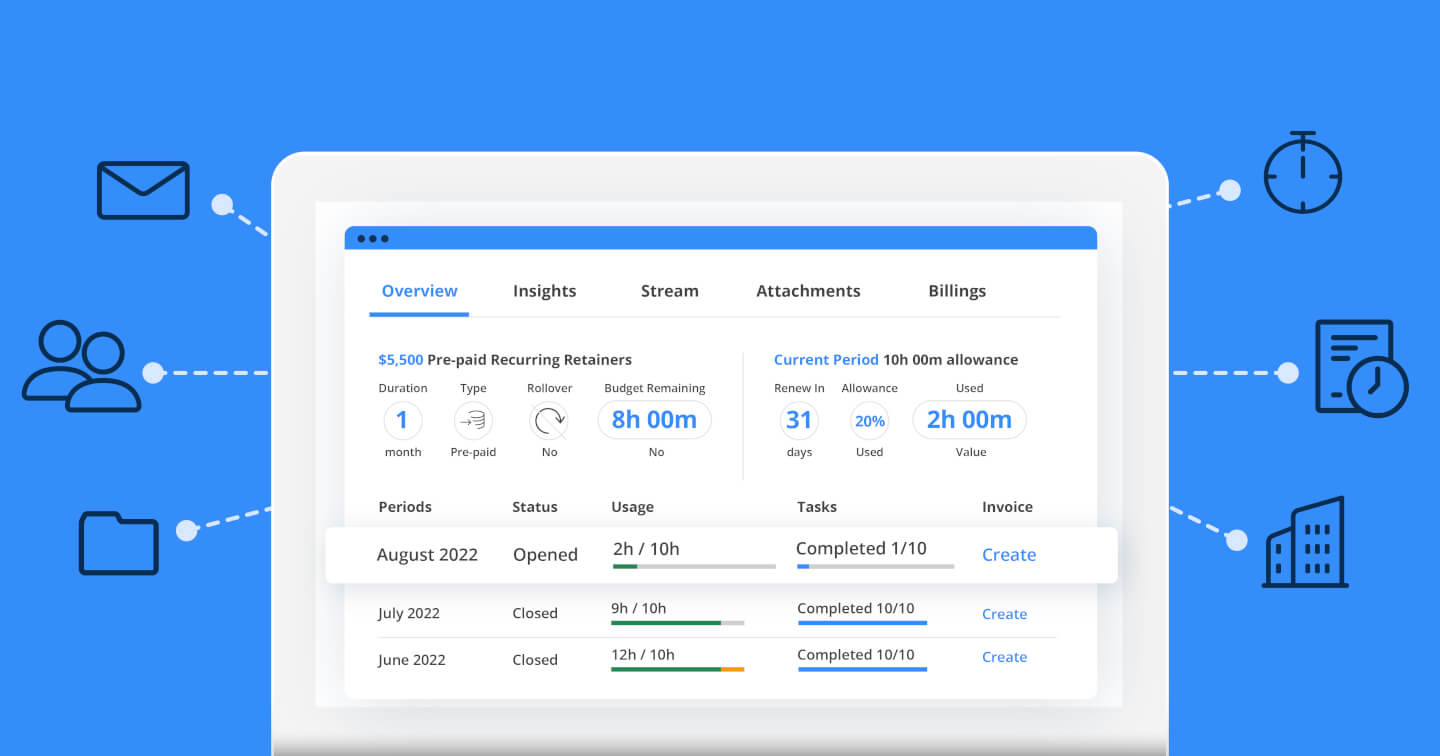
Unlock Growth: Mastering CRM, Marketing, and Referral Systems for Explosive Business Expansion
In today’s hyper-competitive business environment, simply having a great product or service isn’t enough. You need a strategic approach to attract, engage, and retain customers. This is where the powerful synergy of Customer Relationship Management (CRM) systems, marketing automation, and referral programs comes into play. This comprehensive guide will delve into the intricacies of these three pillars, showing you how to integrate them seamlessly to achieve exponential growth and build lasting customer loyalty.
Understanding the Core Components: CRM, Marketing, and Referrals
Customer Relationship Management (CRM): The Heart of Your Strategy
At the core of any successful business strategy lies a robust CRM system. Think of it as the central nervous system of your customer interactions. A CRM isn’t just a database; it’s a sophisticated platform designed to manage and analyze customer data throughout their lifecycle. This includes everything from initial contact to ongoing support and potential upsells.
Key benefits of a well-implemented CRM include:
- Centralized Customer Data: All customer information, interactions, and purchase history are stored in one accessible location.
- Improved Customer Service: Access to comprehensive customer profiles empowers your team to provide personalized and efficient support.
- Enhanced Sales Efficiency: CRM automates sales processes, tracks leads, and provides valuable insights for closing deals.
- Data-Driven Decision Making: CRM analytics offer crucial insights into customer behavior, allowing for informed business decisions.
- Increased Customer Loyalty: Personalized interactions and proactive engagement foster stronger customer relationships.
Choosing the right CRM is crucial. Consider factors like your business size, industry, and specific needs. Popular CRM platforms include Salesforce, HubSpot CRM, Zoho CRM, and Microsoft Dynamics 365. Each has its strengths and weaknesses, so research thoroughly before making a selection. Remember, the best CRM is the one that aligns perfectly with your business objectives.
Marketing Automation: Fueling Growth and Engagement
Marketing automation is the engine that drives your marketing efforts. It involves using software to automate repetitive marketing tasks, allowing you to nurture leads, personalize customer experiences, and measure campaign performance. This frees up your marketing team to focus on more strategic initiatives.
Key features of marketing automation include:
- Email Marketing: Automated email campaigns for lead nurturing, onboarding, and customer communication.
- Lead Scoring: Identifying and prioritizing leads based on their engagement and behavior.
- Social Media Management: Scheduling and automating social media posts for consistent brand presence.
- Website Personalization: Tailoring website content and offers based on user behavior.
- Campaign Tracking and Analytics: Measuring the effectiveness of marketing campaigns and identifying areas for improvement.
Integrating marketing automation with your CRM is essential for a holistic approach. This integration allows you to trigger automated actions based on customer data, such as sending a welcome email when a new lead is added to your CRM or offering a special promotion to a customer who hasn’t made a purchase in a while. Popular marketing automation platforms include HubSpot Marketing Hub, Marketo, Pardot, and ActiveCampaign.
Referral Programs: Turning Customers into Advocates
Referral programs are one of the most effective and cost-efficient ways to acquire new customers. They leverage the power of word-of-mouth marketing, where satisfied customers actively recommend your products or services to their network. Referrals have a high conversion rate because they tap into the trust and credibility already established by the referrer.
Key components of a successful referral program:
- Incentives: Offering rewards to both the referrer and the referred customer. Consider discounts, exclusive access, or other valuable perks.
- Ease of Participation: Making it simple for customers to refer others, typically through a unique referral link or code.
- Tracking and Management: Using software to track referrals, manage rewards, and analyze program performance.
- Promotion: Actively promoting your referral program through email, social media, and your website.
- Clear Terms and Conditions: Ensuring transparency and avoiding any ambiguity.
Referral programs can be integrated into your CRM and marketing automation systems to streamline the process and track results. Platforms like ReferralCandy, Ambassador, and SaaSquatch offer robust referral program solutions.
The Power of Integration: CRM, Marketing Automation, and Referrals Working Together
The true power lies in the seamless integration of CRM, marketing automation, and referral programs. When these three elements work in harmony, they create a flywheel effect, driving sustainable growth and customer loyalty. Here’s how they can be integrated:
- Lead Nurturing: Automatically send targeted email sequences to leads based on their behavior and information stored in your CRM. Use marketing automation to track lead engagement and move them through the sales pipeline.
- Personalized Communication: Leverage CRM data to personalize email content, website experiences, and even sales calls. Customers respond well when they feel understood and valued.
- Referral Program Automation: Trigger referral program invitations based on customer milestones, such as a successful purchase or a positive customer service interaction.
- Closed-Loop Reporting: Track the entire customer journey from initial contact to referral, allowing you to measure the ROI of your marketing efforts and identify areas for optimization.
- Customer Segmentation: Segment your customer base within your CRM and tailor marketing and referral campaigns based on specific customer characteristics and behaviors.
Imagine this scenario: A new customer signs up for your service (CRM). They receive a welcome email (marketing automation) and, after a month of using your service, they’re automatically invited to join your referral program (referral program integration). If they refer a friend, both receive a discount (reward), and the new customer is added to your CRM, starting the cycle anew. This kind of seamless integration creates a powerful, self-perpetuating growth engine.
Implementing a Successful Strategy: A Step-by-Step Guide
Implementing a comprehensive CRM, marketing automation, and referral program strategy requires careful planning and execution. Here’s a step-by-step guide to get you started:
- Define Your Goals: What are your specific business objectives? Are you looking to increase sales, improve customer retention, or acquire new customers? Clearly defined goals will guide your strategy.
- Choose the Right Technology: Select CRM, marketing automation, and referral program platforms that align with your business needs, budget, and technical capabilities. Consider factors like scalability, integration options, and ease of use.
- Clean and Organize Your Data: Ensure your customer data is accurate, complete, and up-to-date. This is crucial for effective personalization and segmentation.
- Develop a Lead Nurturing Strategy: Create automated email sequences and other marketing campaigns designed to engage leads and guide them through the sales funnel.
- Design Your Referral Program: Determine your incentives, referral process, and tracking mechanisms. Make it easy for customers to participate and reward them promptly.
- Integrate Your Systems: Connect your CRM, marketing automation, and referral program platforms to ensure seamless data flow and automation. This may involve API integrations or using a platform that offers native integrations.
- Train Your Team: Provide training to your sales, marketing, and customer service teams on how to use the new systems and processes.
- Launch and Monitor: Roll out your integrated strategy and continuously monitor its performance. Track key metrics like conversion rates, customer acquisition cost, and referral program participation.
- Analyze and Optimize: Regularly analyze your data to identify areas for improvement. Make adjustments to your campaigns, referral program, and CRM processes based on your findings. A/B testing is a great way to optimize your efforts.
- Iterate and Adapt: The business landscape is constantly evolving. Continuously adapt your strategy to stay ahead of the curve and meet the changing needs of your customers.
Best Practices for Maximizing Results
To maximize the effectiveness of your CRM, marketing automation, and referral programs, consider these best practices:
- Prioritize Customer Experience: Focus on providing a positive and personalized experience at every touchpoint. Happy customers are more likely to be loyal and refer others.
- Segment Your Audience: Divide your customer base into segments based on demographics, behavior, and other relevant criteria. This allows you to tailor your messaging and offers for maximum impact.
- Personalize Your Communication: Use customer data to personalize email content, website experiences, and other communications. Personalization builds trust and increases engagement.
- Automate Where Possible: Automate repetitive tasks to save time and resources. Marketing automation is a powerful tool for streamlining your processes.
- Track and Measure Everything: Track key metrics to measure the performance of your campaigns and identify areas for improvement. Use data to make informed decisions.
- Be Consistent: Maintain a consistent brand voice and messaging across all your channels. Consistency builds brand recognition and trust.
- Provide Excellent Customer Service: Proactively address customer needs and resolve issues quickly. Excellent customer service is essential for building loyalty and encouraging referrals.
- Offer Value: Provide valuable content, offers, and experiences to your customers. Focus on providing real value, not just selling your products or services.
- Keep it Simple: Avoid overcomplicating your processes. Make it easy for customers to interact with your brand and participate in your referral program.
- Stay Agile: Be prepared to adapt your strategy based on changing market conditions and customer feedback. Agility is key to long-term success.
Real-World Examples of Success
Let’s explore some real-world examples of businesses that have successfully implemented CRM, marketing automation, and referral systems:
- Dropbox: Dropbox’s referral program, which offered extra storage space to referrers and new users, was instrumental in its early growth. The program was simple, easy to use, and highly effective.
- Airbnb: Airbnb uses a combination of CRM, marketing automation, and a referral program to attract new hosts and guests. Their targeted email campaigns and personalized experiences foster loyalty.
- Tesla: Tesla’s referral program, which offered rewards like early access to new products and exclusive experiences, helped drive sales and build a strong community of brand advocates.
- HubSpot: HubSpot’s inbound marketing methodology, which combines CRM, marketing automation, and content marketing, has been highly successful in attracting and converting leads. Their focus on providing valuable content and personalized experiences has built a strong brand reputation.
- Uber: Uber’s referral program, offering ride credits to both the referrer and the referred user, fueled rapid expansion. The program was integrated into their app, making it seamless for users to participate.
These examples demonstrate the power of integrating these three elements. By learning from these success stories, you can adapt these strategies to your own business and drive significant growth.
Overcoming Challenges and Avoiding Pitfalls
While the integration of CRM, marketing automation, and referral programs offers significant benefits, it’s important to be aware of potential challenges and pitfalls:
- Data Silos: Data silos can hinder the flow of information between systems. Ensure your systems are properly integrated to avoid this issue.
- Poor Data Quality: Inaccurate or incomplete data can lead to ineffective marketing campaigns and poor customer experiences. Invest in data cleaning and validation processes.
- Lack of Personalization: Generic messaging can alienate customers. Leverage your data to personalize your communications and offers.
- Over-Automation: Avoid over-automating your processes, which can make your communications feel impersonal or robotic.
- Ignoring Customer Feedback: Failing to listen to customer feedback can lead to dissatisfaction and missed opportunities for improvement.
- Lack of Measurement: Without proper tracking and analysis, you won’t know what’s working and what’s not. Implement robust tracking and reporting mechanisms.
- Choosing the Wrong Technology: Selecting the wrong platforms can lead to wasted resources and frustration. Research your options carefully and choose solutions that fit your needs.
- Neglecting Training: Your team needs proper training to effectively use the new systems and processes. Provide ongoing support and training to ensure success.
- Not Adapting to Change: The business environment is constantly evolving. Be prepared to adapt your strategy and processes as needed.
- Focusing on Quantity Over Quality: Prioritize quality over quantity in your marketing efforts. Focus on providing value and building genuine relationships.
The Future of CRM, Marketing, and Referrals
The landscape of CRM, marketing automation, and referral programs is constantly evolving. Here are some trends to watch:
- Artificial Intelligence (AI): AI is being used to personalize customer experiences, automate tasks, and improve decision-making. Expect to see more AI-powered features in CRM and marketing automation platforms.
- Hyper-Personalization: Businesses are focusing on delivering highly personalized experiences based on individual customer preferences and behaviors.
- Voice Search Optimization: With the rise of voice search, businesses need to optimize their content for voice-based queries.
- The Rise of Chatbots: Chatbots are becoming increasingly sophisticated, providing instant customer support and automating lead generation.
- Focus on Data Privacy: With growing concerns about data privacy, businesses need to prioritize data security and transparency.
- Integration of Social Commerce: Social media platforms are becoming increasingly important for e-commerce, with businesses integrating shopping features into their social media profiles.
- Emphasis on Omnichannel Marketing: Businesses are adopting omnichannel strategies to provide a seamless customer experience across all channels.
Staying informed about these trends will enable you to adapt your strategies and stay ahead of the competition.
Conclusion: Harnessing the Power for Unstoppable Growth
Integrating CRM, marketing automation, and referral programs is a powerful strategy for driving sustainable business growth. By centralizing your customer data, automating your marketing efforts, and leveraging the power of word-of-mouth marketing, you can attract, engage, and retain customers more effectively.
This guide has provided a comprehensive overview of these three pillars, offering insights into their key components, the benefits of integration, implementation steps, best practices, and real-world examples. By following these guidelines and staying informed about the latest trends, you can create a robust, customer-centric strategy that drives explosive growth and fosters lasting customer loyalty.
Remember, the key to success lies in a holistic approach. By viewing CRM, marketing automation, and referral programs not as separate entities, but as interconnected components of a unified strategy, you can unlock the full potential of your business and achieve remarkable results. Start today, and watch your business flourish!
Good luck on your journey to growth!



